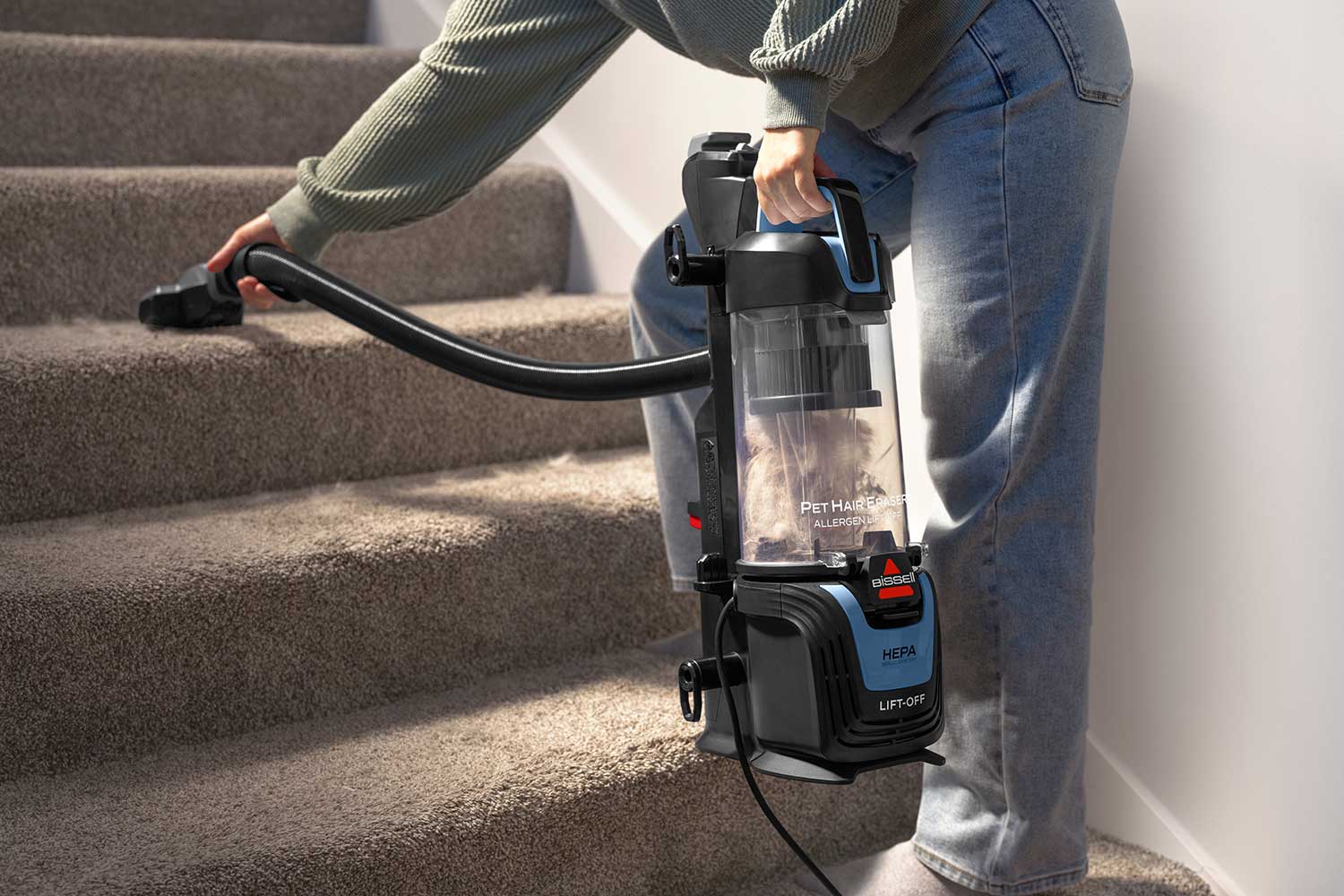The Race for Stronger Vacuum Suction Power
When crafting new cleaning innovations, BISSELL® engineers always keep two make-or-break vacuum performance metrics in mind: suction strength and air flow, which together determine a machine’s cleaning capabilities.
If you’ve ever had to vacuum over the same area twice, you know how important suction power is to vacuum performance. A machine that’s powerful enough to pick up pet fur, dust, and pollen allergens in a single pass saves time and energy while a weak vacuum leaves residual debris and frustration.
That’s why, despite all the cleaning enhancements BISSELL adds to its vacuums – from headlights to HEPA filtration – creating machines with strong suction and efficient airflow are a foundational requirement, according to Gabe Melching, Engineering Manager at BISSELL.

Unpacking vacuum suction, air flow, and air power
More than half of people buying vacuums say “suction” is the most important performance feature. Suction refers to the pressure you feel when your hand covers the vacuum hose. And, while suction greatly influences how much unwanted stuff your vacuum picks up, “air flow,” or the rate at which air travels through a machine, is also important. Together, the two are used to figure a third metric vacuum engineers hold close: “air power,” which is also referred to as “suction power.”
If these similar, and sometimes synonymous, terms have you a little confused, you’re not alone.
“When people say they want a vacuum with strong suction, they are generally referring to the pressure they feel at the end of the hose,” says Gabe. “What you can’t easily feel is the volume of airflow through the machine.”
Airflow can be reduced when there are restrictions in the airpath – such as sharp turns – and both airflow and suction can be negatively impacted when the machine has leaks, such as gaps between key parts.
“When people say they want a vacuum with strong suction, they are generally referring to the pressure they feel at the end of the hose. What you can’t easily feel is the volume of airflow through the machine.”
– Gabe Melching, Engineering Manager at BISSELL

Creating our strongest vacuum suction yet
Good vacuum design starts with a strong and efficient motor – that’s the only way to create the extreme pressure difference required to lift air and debris up into and through the machine. The motor works like a fan running in reverse, pulling into the machine air and any messes the rotating brush roll stirs up. In an upright vacuum, the air and debris typically travel through a hose up the spine of the machine and into the dirt tank. Most pollen, pet fur, and dust are trapped here. As the air exits the machine, any remaining particles are captured by the vacuum filters.
The Pet Hair Eraser® Allergen Lift-Off® has the strongest suction of any BISSELL® vacuum. This Pet Proven® certified convertible vacuum easily disappears kitty litter, fur, and dust allergens, and has unmatched suction when compared to the Shark® Navigator vacuum1.
To fine-tune and rate the vacuum, our engineers put the Pet Hair Eraser® Allergen Lift-Off® vacuum through a series of tests, measuring the stand-alone strength of the machine’s suction and seeing how well it performs at actual cleaning tasks, such as picking up pet fur and trails.
In addition to strong suction and low-resistance airflow, this Pet Hair Eraser® model has a number of other built-in features designed to ease and enhance cleaning. These include a Tangle-Free Brush Roll that prevents hair wrap; an XL Dirt Tank to cut down on trips to the waste bin; a HEPA filter that traps 99.97%2 of dust and dander allergens while you clean; and the versability of an included hose and Lift-Off® detachable pod that allow you to clean anywhere.
Maintaining strong vacuum suction

One way to keep your vacuum performing at its peak is to regularly clean the filters.“Dirty vacuum filters directly impact suction, airflow, and air power,” says Gabe. Different types of filters require different cleaning techniques and schedules, so check your user manual for more information.
Other tips for preserving strong vacuum suction and suction power include emptying the dirt tank when it reaches capacity and regularly checking the vacuum hose and foot for clogs.
¹Vs. NV360 based on ASTM F558 sealed suction at the hose. ²Captures 99.97% of particles 0.3 microns.